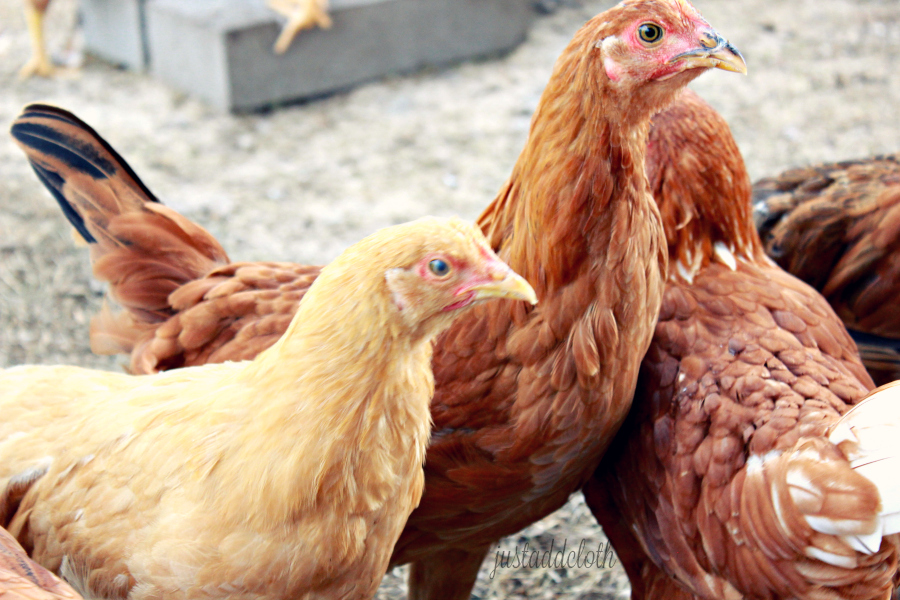 A Rural Minnesota Chicken Coop. How we house and protect our chickens.
A Rural Minnesota Chicken Coop. How we house and protect our chickens.
Look at what little babies these pullets were! They were only about 14 weeks old when I took these photos. I kinda wanna squeeeeeee when I look at how tiny their combs were.
So let’s talk coops. There a ton of different ways to set up your chicken coop. It really depends on your location, your climate, and how many birds you keep.
We have 15 large heritage breeds at the time I write this. We live in the country with foxes, coyote, and birds of prey. We live in Minnesota, which means it can be -40°F in winter and 110°F in summer.
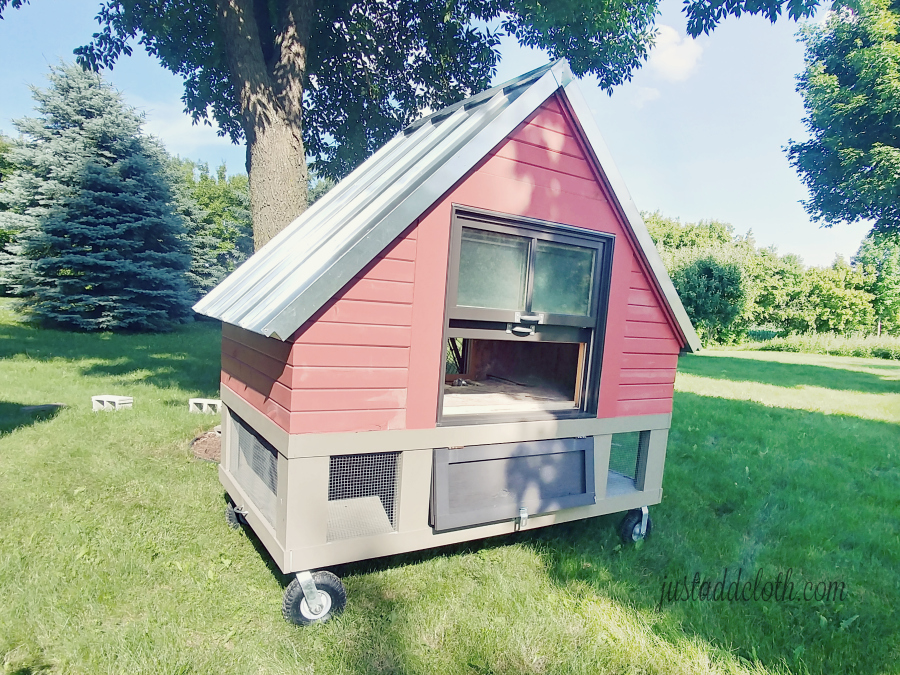
I had long ago decided against a coop kit since they all looked flimsy and like they wouldn’t survive the winter. One day I was perusing Craigslist looking at heavy duty sheds I could convert to coops, when I happened upon this beauty. The woman who built it designed it herself and was from this region, so it is quality construction for this environment. In fact, she spent $3k building it! Then she moved to a place that wouldn’t allow her birds, so she sold it to me for $700. This coop has a steal roof, spray insulated walls, triple pane glass windows, 4×4 frame posts and it’s own little porch underneath. It is sturdier construction than the house we actually live in. It also weighs a thousand pounds and was a real treat to pickup and maneuver into its new home. It was worth every penny.
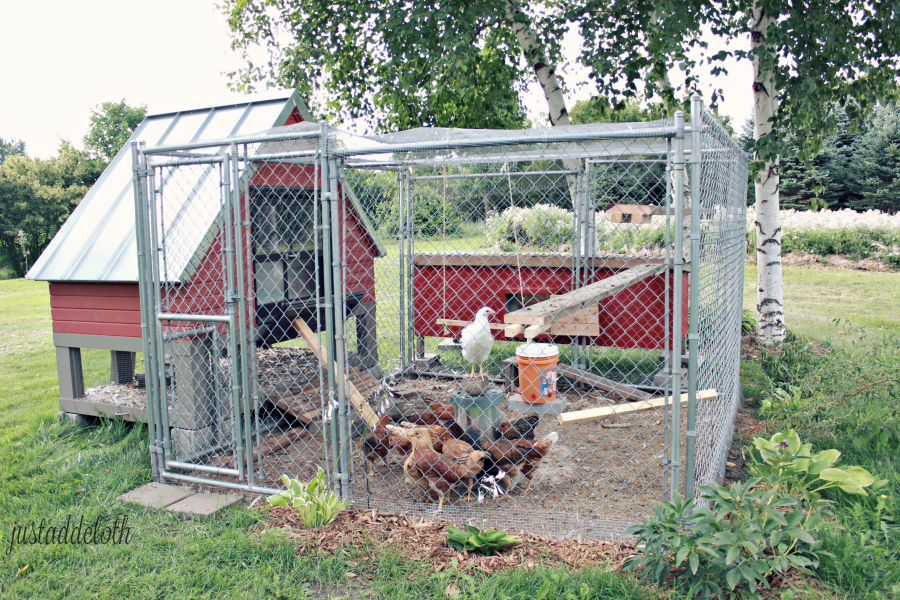
The homestead we purchased had a dilapidated old coop and dog kennel on the property, so we refurbished and repurposed. The kennel is 8×8 ft and 6ft high. We cut openings in the cyclone fencing for the coop doors to open up through the fencing. Then used lumber staples to attach the fencing to the coops to keep it gap free and secure. We further secured the chicken yard by covering the top of the run with hardware cloth wired to the kennel frame. Then we dug an 18 inch deep trench around the run and wired hardware cloth to the cyclone fencing and buried it 18 inches deep in the trench. This makes it difficult for predators to dig under the fence. Although, a really dedicated animal could of course tunnel under.
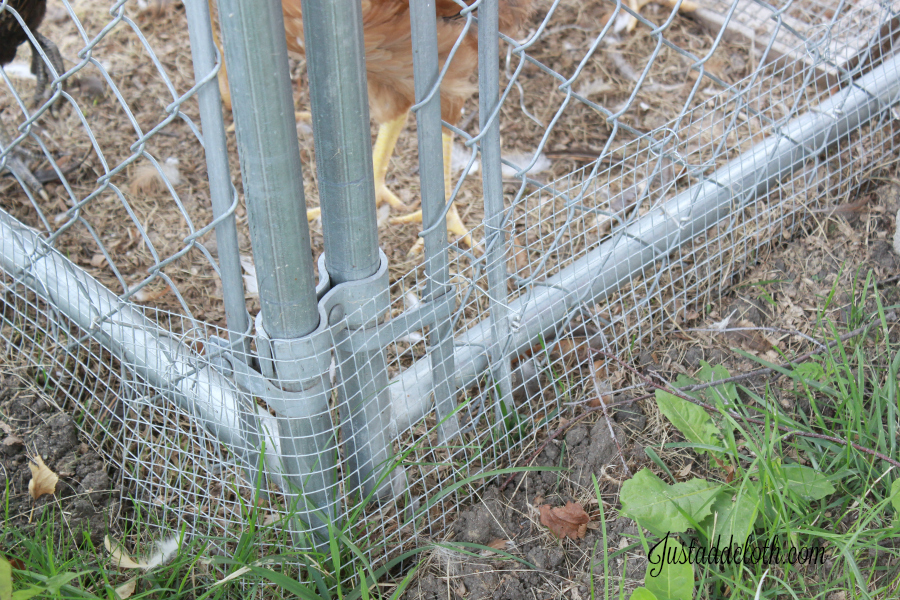
We decided to use both coops when it became clear all 15 pullets were thriving. I was expecting a couple losses. Instead we have a hardy flock. We hurriedly refurbished the second coop, only to have our birds completely ignore it. They have not once roosted in that second coop. Instead they do all their laying in there. Since we get a lot of rain here, we moved the feeder into the second coop.
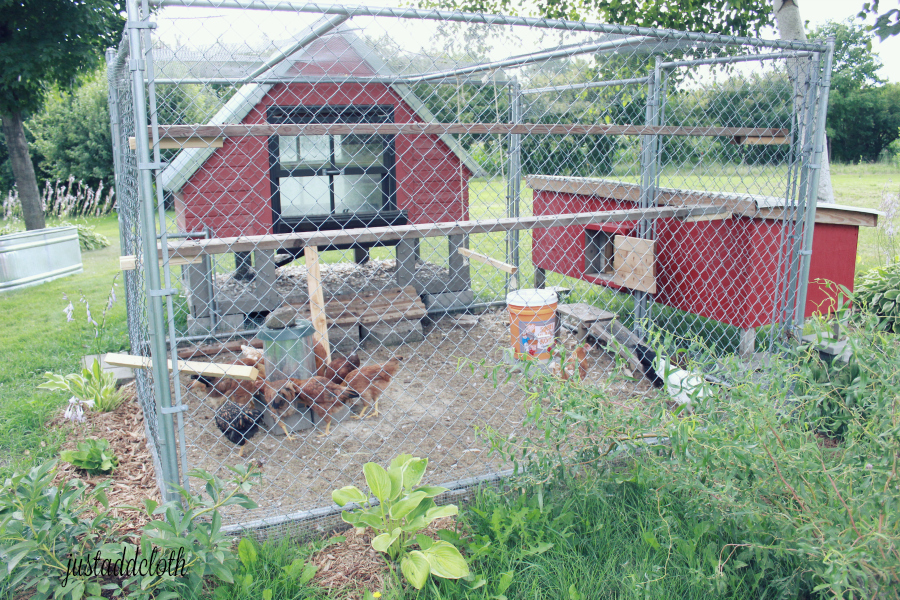
We have cheap wood laying boxes in both coops, but our hens only lay in the secondary coop. They choose to all sleep in the tall coop. There are four roosting bars, but all 15 birds choose to pile onto just two bars. They stack themselves on top of each other like one of those water skiing pyramids. It just goes to show that you can provide them adequate space, but they may not choose to use it.
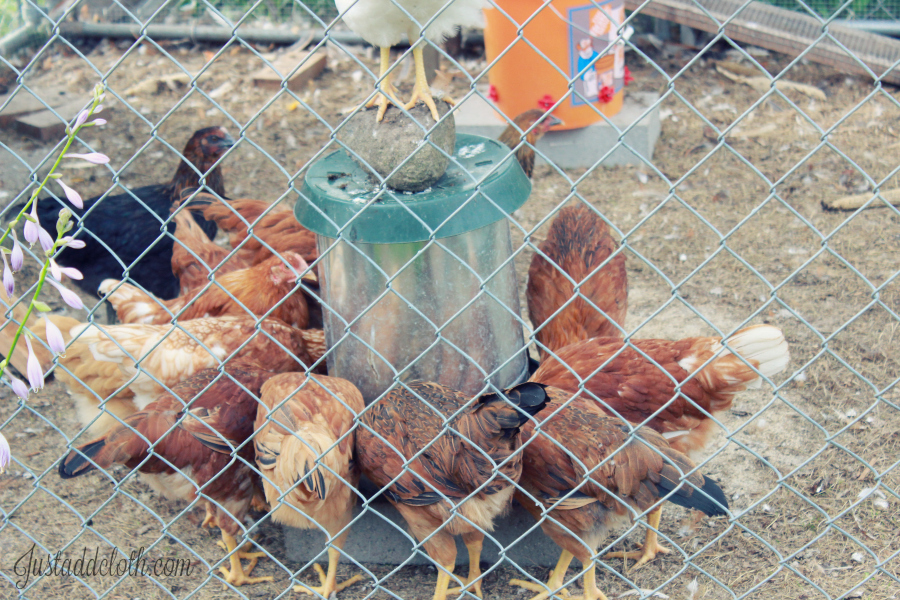
We use a 30 lb galvanized steel feeder since 15 birds go through quite a bit of feed. These photos are from before we moved the feeder inside the second coop. We made our own waterer by purchasing water nipples online and installing them in a utility bucket using a drill and plummer tape. We keep it up on cinder blocks to keep the nipples higher and clean. (Buying a ready-made five gallon nipple waterer was like $60, but our DIY version was about $15 with a bucket plus lid from Home Depot and six water nipples from Amazon.)
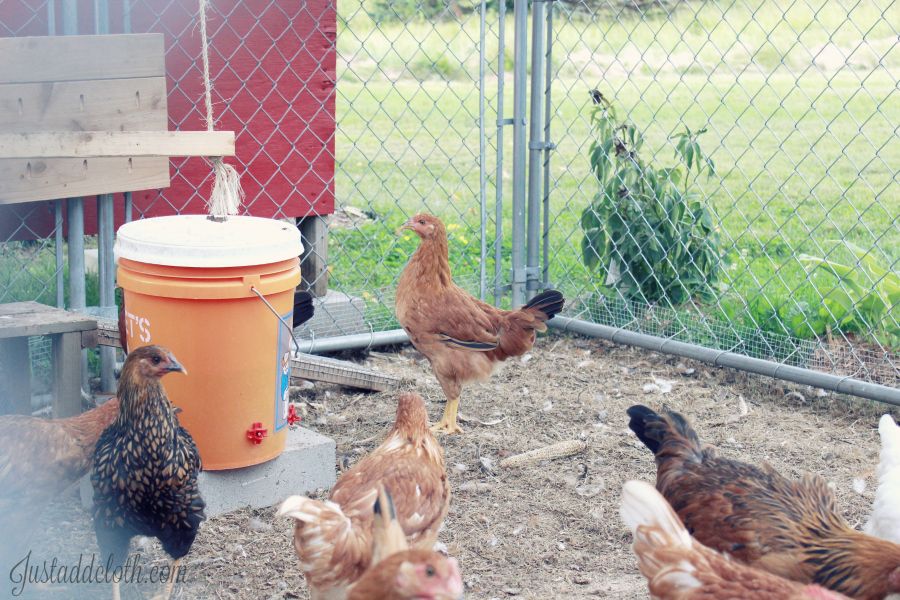
By husband loves to complain about the chickens, but he is the one who built them the 8ft perch boards and the swing. And he feeds them the most treats. *Secret Softie*
Between the coops and the run, they have a little over 130 square feet of secure space. This a little small for 15 birds, so during the day we often open the run and let them free range. Thus far, they stick within a four acre range of the coop and we haven’t lost one. Although, I did have a Benny Hill moment chasing them all over a corn field one day when a couple wandered too far.
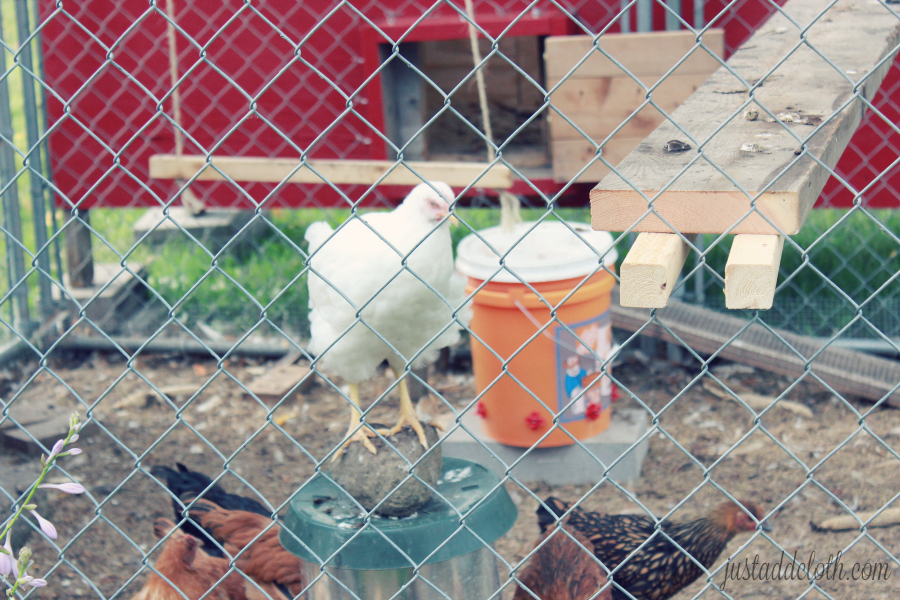
We have not had any predators get into the run. There must be enough food elsewhere. The coyote climb the kids’ play-set and poop on the top of the slide, so they definitely are familiar with the meal of poultry right there.
In summer, I keep the coop windows open a couple inches on each side to let out heat. I chose not to run electric to the coop. I prefer the birds just adapt to the cold and lack of daylight naturally in winter. When I have opened a coop window to check on them on a 5°F day, the air inside was actually pretty warm.
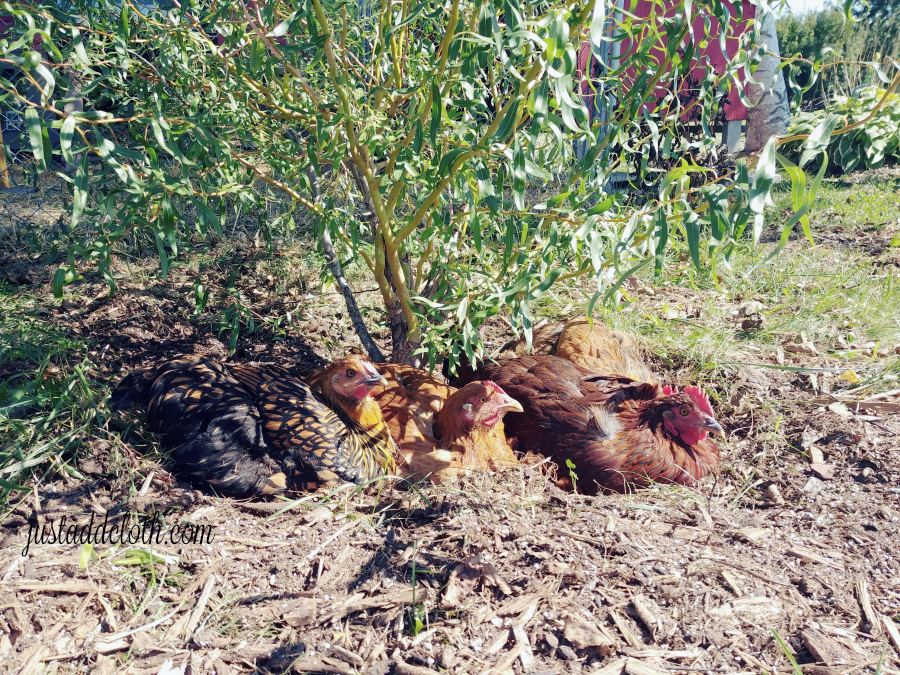
On the outer perimeter of the run, I wanted some vegetation, so I planted chicken friendly hostas, peonies, and corkscrew willow. The hens completely decimated it all within weeks. Haha. I have since learned to plant more than I actually want.
By the way, have you ever eaten your hosta leaves? They are quite good.
I planted the willow with the intention that it will provide shade in the run in a couple years. But, whenever the chickens come out of the run, they dig up the soil around the willow roots and nest under it. I don’t think the willow is happy, although the chickens seem to be.
Our set up is only slightly more elaborate in winter to deal with the heavy amount of snow here. I’ll go over that another day.
See also:

